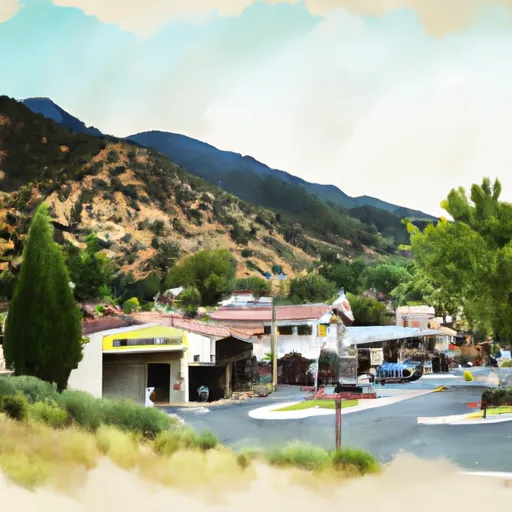-
 Snoflo Premium
Snoflo Premium
Get unlimited access to all our content
With no Ad interruptions! - Start Your Free Trial Login with existing account
Lytle-Creek
Eden Index
Climate
9.4
•
Recreation
9.7
•
Community
•
Safeguard
7.2/10

Located in San Bernardino County, California, Lytle Creek is a small census-designated place nestled in the San Gabriel Mountains. The climate in Lytle Creek is typically Mediterranean, characterized by hot and dry summers, and mild and wet winters. Summers can see temperatures reaching upwards of 90°F, while winters rarely drop below freezing. The area receives an average annual rainfall of around 25 inches, mostly occurring during the winter months.
Lytle Creek is home to the Lytle Creek Wash, a significant hydrological feature that serves as a major tributary to the Santa Ana River. The creek is fed by snowmelt and natural springs from the surrounding mountains, contributing to a steady flow throughout the year. It supports a diverse range of wildlife and provides a habitat for various species.
Outdoor enthusiasts flock to Lytle Creek for its abundant recreational opportunities. Hiking and camping are popular activities, with several trails offering breathtaking views of the surrounding mountains and canyons. The area is also renowned for its fishing, particularly for rainbow trout, making it a favorite spot among anglers. Additionally, visitors can enjoy picnicking, birdwatching, and even off-roading in designated areas. Lytle Creek provides a serene and picturesque setting for nature lovers seeking an escape from the hustle and bustle of city life.
What is the Eden Index?
The Snoflo Eden Index serves as a comprehensive rating system for regions, evaluating their desirability through a holistic assessment of climate health, outdoor recreation opportunities, and natural disaster risk, acknowledging the profound impact of these factors on livability and well-being.
Climate Health Indicator (CHI): 9.4
Lytle-Creek receives approximately
1329mm of rain per year,
with humidity levels near 72%
and air temperatures averaging around
14°C.
Lytle-Creek has a plant hardyness factor of
9, meaning
plants and agriculture in this region tend to thrive here all year round.
By considering the ideal temperature range, reliable water supplies, clean air, and stable seasonal rain or snowpacks, the Climate Health Indicator (CHI) underscores the significance of a healthy climate as the foundation for quality living.
A healthy climate is paramount for ensuring a high quality of life and livability in a region, fostering both physical well-being and environmental harmony. This can be characterized by ideal temperatures, reliable access to water supplies, clean air, and consistent seasonal rain or snowpacks.
Weather Forecast
Streamflow Conditions
Santa Ana
Area Rivers
Santa Ana
Snowpack Depths
Santa Ana
Reservoir Storage Capacity
Santa Ana
Groundwater Levels
Recreational Opportunity Index (ROI): 9.7
The Recreational Opportunity Index (ROI) recognizes the value of outdoor recreational options, such as parks, hiking trails, camping sites, and fishing spots, while acknowledging that climate plays a pivotal role in ensuring the comfort and consistency of these experiences.
Access to outdoor recreational opportunities, encompassing activities such as parks, hiking, camping, and fishing, is crucial for overall well-being, and the climate plays a pivotal role in enabling and enhancing these experiences, ensuring that individuals can engage in nature-based activities comfortably and consistently.
Camping Areas
| Campground | Campsites | Reservations | Toilets | Showers | Elevation |
|---|---|---|---|---|---|
| Lupine | 11 | 6,551 ft | |||
| Manker | 21 | 6,015 ft | |||
| Prado Regional Park | 75 | 553 ft | |||
| Silverwood Lake State Rec Area | 131 | 3,373 ft | |||
| Rancho Jurupa Park | 67 | 751 ft | |||
| Guffy | 6 | 8,219 ft | |||
| Applewhite | 44 | 3,306 ft | |||
| Table Mountain | 111 | 7,161 ft | |||
| Cabin Flat | 11 | 6,690 ft | |||
| Glen Helen Regional Park | 47 | 1,993 ft |
Nearby Ski Areas
Catastrophe Safeguard Index (CSI):
The Catastrophe Safeguard Index (CSI) recognizes that natural disaster risk, encompassing floods, fires, hurricanes, and tornadoes, can drastically affect safety and the overall appeal of an area.
The level of natural disaster risk in a region significantly affects safety and the overall livability, with climate change amplifying these risks by potentially increasing the frequency and intensity of events like floods, fires, hurricanes, and tornadoes, thereby posing substantial challenges to community resilience and well-being.
Community Resilience Indicator (CRI):
The Community Resilience Indicator (CRI) recognizes that education, healthcare, and socioeconomics are crucial to the well-being of a region. The CRI acknowledges the profound impact of these elements on residents' overall quality of life. By evaluating educational resources, healthcare accessibility, and economic inclusivity, the index captures the essential aspects that contribute to a thriving community, fostering resident satisfaction, equity, and social cohesion.

